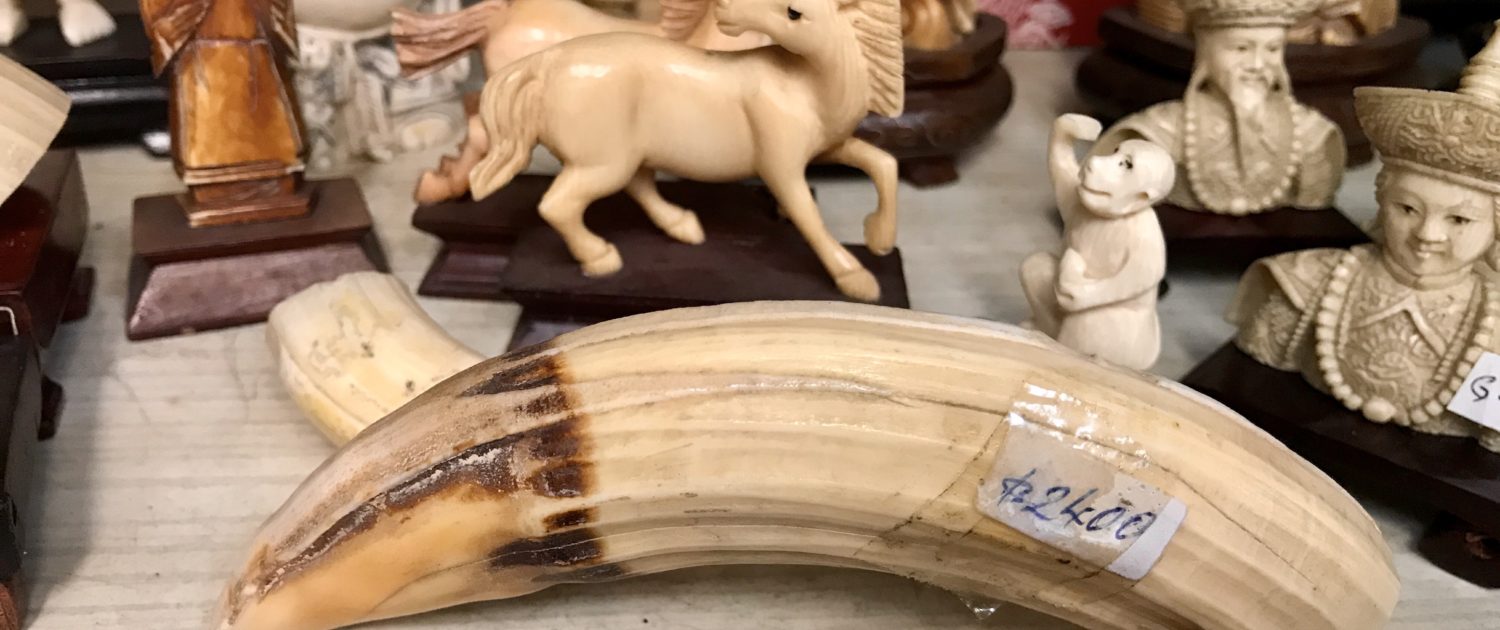Incomplete trade records imperil hippo populations
By: Alexandra Andersson, PhD Student, The University of Hong Kong
Wildlife trade has become enormous in both scale and scope. It encompasses untold tonnes of seafood, furniture, fashion items, medicines, pets, jewellery and ornaments – to name a few – traded continuously, and affecting thousands of species, many of which are now threatened with extinction.
This, granted, is difficult to manage. However, when it comes to endangered species, it is imperative to have a precise knowledge of exactly how much is harvested, processed, traded, and sold; particularly in light of the undocumented black-market trade happening in parallel for many wildlife products.
Trade records of all goods are reliant on self-reporting, whereby the countries of export and import must declare the volume of items sent or received, respectively, and report it to a central authority. Threatened species trade is regulated through the Convention on International Trade in Endangered Species of Flora and Fauna (CITES), the records of which are available online as far back as 1975.
Problems arise when there is a mismatch in reporting quality, methods, or diligence between countries. This situation is inevitable for CITES, with its 183 signatory countries, to a certain degree. However, a quick scan of the records demonstrates that vast and consistent data discrepancies are clear in many cases, and that the true volume of many traded endangered species is simply unknown. This is alarming, considering the reason that all of these species are included in CITES is because they are vulnerable to over-exploitation, and extinction.
In a recent paper, my co-author Luke Gibson and I examined trade in hippo teeth as a case study to illustrate this. Hippos, listed on the IUCN Red List as Vulnerable, are not the only species affected by this problem, however. Since 2000, there have been 2,400 fewer humphead wrasse (Endangered) and over 100,000 additional Southeast Asian box turtles (Vulnerable) reported to have been imported into Hong Kong compared to records from exporters in Indonesia and Malaysia. Both species are transported live, and sourced from the wild. The mismatch in humphead wrasse records has been linked to potential data mismanagement and shipment monitoring issues at Hong Kong ports.
Since 1975, 90% of the world’s hippo teeth trade has passed through the city state of Hong Kong, and 75% of it has come from Tanzania and Uganda. This made analysis of this dataset (and reasons for the enormous mismatch) relatively straightforward. We found that overall, Hong Kong received 3,176 kg more hippo teeth than declared exported by Tanzania, and in 63% of hippo teeth trade transactions with Uganda, Hong Kong declares receiving more than what was reported as sent by Uganda. In total, over 14,000 kg of hippo teeth was unaccounted for between Uganda and Hong Kong between 1975 and 2016, representing more than 2,700 individual hippos – that’s 2% of the global population.
Common causes for data discrepancies include the use of non-standard measurement units, recording the number of licenses issued rather than the volume of specimens sent, incomplete or late submission of annual reports, and receiving a shipment in subsequent years to when it was sent. These causes were examined, and in this case rejected as reasons behind the discrepancies in the hippo trade data.
With no known cause for such extreme and persistent data mismatch, in our paper we put the discrepancies into the context of hippo population declines, outdated threat-level assessments, and poaching, climate change, and disease outbreaks. The resulting picture is grim, and highlights the importance of diligent control of trade volumes of threatened species and products. Without it, the effectiveness of the very apparatus put in place to protect these animals from extinction is compromised – as is their survival.
These findings are of particular significance in light of Hong Kong’s upcoming elephant ivory ban, passed in January 2018 and scheduled to take effect in 2021. Previous studies have shown that after the global 1989 ban on ivory trade, hippo teeth demand increased. The recent one-off auction of 3.5 tonnes of hippo teeth by Tanzania is troubling, as it went ahead without any official review of the pre-existing trade discrepancies, no additional traceability measures, nor renewed population estimates and updated threat-level assessments. Now more than ever, hippos need to be offered comprehensive protection. Population estimates are around a decade out of date, as is the corresponding Vulnerable IUCN Red List classification. Trade needs to be monitored, carefully. Otherwise hippos may not survive a quadruple-threat of increased demand for their teeth, mismanaged legal trade, continued poaching, and climate change.
Article edited by: Nafeesa Esmail






